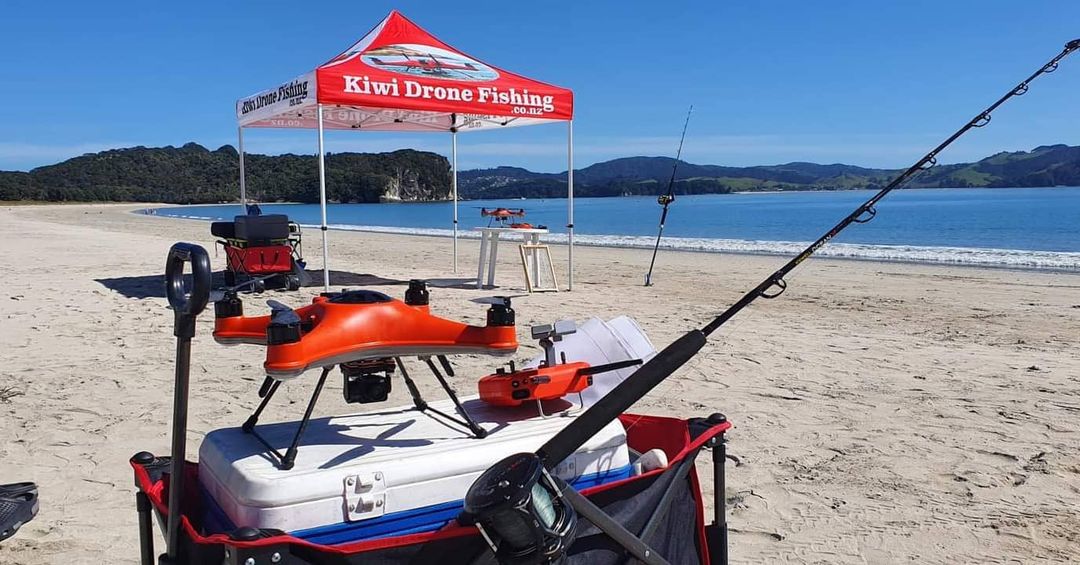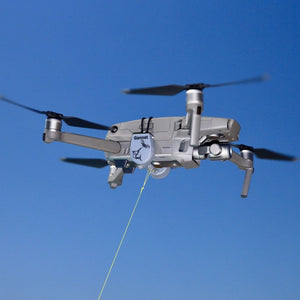
If you're considering using a drone for fishing, you'll likely want to learn more about the regulations. There are instructional videos showing you how to fly your drone to catch fish. You can also read our article about drone ethics. We'll be discussing some of the ethical issues surrounding drone fishing. Don't forget our guide to drone fishing gear.
Regulations for drone fishing
A drone fishing video for tuna may make you wonder about the regulations. While there are many reasons to adhere to local laws, safety is the most important. In order to safeguard both you and your fish's lives, it is crucial to ensure that the right laws are followed. In this article, we'll discuss some of the most important regulations and ensure you're following them. Also, don't forget about the International Game Fish Association Rules.
Drones cannot be operated over public places, including sporting events or stadiums. They cannot transport weapons or be within a distance of half a kilometer from a sporting event. Drone operators must also be able to view their aerial equipment at any time. Drones cannot fly over public buildings, stadiums, or critical infrastructure. You can check with your local law enforcement agency to learn more about drone fishing rules.

While most states have passed drone laws, there are still some states that have not. Illinois recently passed SB2167. The bill prohibits the operation of drones within state parks without prior permission. It also defines privacy rights and sets out the rules that drone operators must follow for both recreational and commercial purposes. It also bans drones interacting with wildlife and hunters. These new laws are expected in a few decades.
Concerns about drone fishing
Drone fishing is controversial. There are companies that sell underwater drones capable of fishing for fish. Many drones have video content that shows the fishing process. It is very similar to casting a line at a fish. The process of taking a fish from water is different. This type of fishing is not ethically acceptable.
While there are obvious advantages to using drones for fishing, some have argued that they may be cheating the fishing population. Even though fishing hasn't changed much over time, drones can be used to catch fish and may reduce the excitement of the chase. Drones could also be harmful to conservation. Here are some of the ethical concerns that you should consider before you decide to use a drone for fishing.

Drone fishing is not a good option. Drone fishing may cause damage to the environment or overfish endangered species. While some states permit drones for recreational fishing, others prohibit it. Drone fishing is not without its limitations. Cheap drones might lack the GPS functionality, lifting capabilities, or control range needed. A second problem is that drone fishing can cause fish to be lost if the line becomes tangled. Finally, there are issues with piloting.
FAQ
What are the rules regarding drone operation?
You need to register your drone with the FAA. This registration process includes submitting information about the device, including its weight, size, battery capacity, and operating frequency. The FAA will issue you an identification number.
What is the difference between a quadcopter and a hexacopter?
A quadcopter can be described as a quadrotor helicopter with four rotors. It flies the same way as a traditional helicopter. It is equipped with four rotors, each of which can rotate independently. The hexacopter can be described as a quadcopter but has six rotors, instead of the usual four. Hexacopters have more stability and maneuverability than quadcopters.
Can you fly a drone high without a licence?
The FAA has no limit on how high you can fly a drone. The FAA does require you to register unmanned aircraft systems (UAS), which include the registration number of your model, weight and size, serial numbers, manufacturer's names, date manufactured and other information.
How can I keep drones out of my house?
Drones are becoming increasingly popular for home surveillance, but they also threaten privacy and security. Install motion sensors on your property to detect any unapproved flying objects. This will help you avoid being attacked by drones.
Statistics
- According to ZipRecruiter, the minimum hourly wage of drone pilots is $20. (thedroneu.com)
- According to industry research from ZipRecruiter , there are 10 cities where the typical salary for a Drone Pilot job is above the national average. (dronesgator.com)
- According to Indeed, a drone pilot gets paid $25.73 per hour on average in the US. (dronesgator.com)
External Links
How To
How to Fly Drones at a Beginning Level
A drone is a remotely-controlled aircraft that is used for aerial photography and surveillance. Drones have been in use since World War II. However, commercial use began in 2010 when DJI released their Phantom series of quadcopters. There have been many drones made since then. These range from beginner-friendly drones like Parrot AR Drone 2.0 to more advanced multi-rotor craft like DJI Mavic Pro.
There are many options for flying a drone.
-
Remote control: This uses a remote control device that attaches to your hand and allows you control the drone along its flight path. There are two main types for controllers: Joysticks or On/Off switches, which can be used to control the drone's flight path.
-
Manual Control – This method lets users remotely control the drone by using a smartphone app. The app will provide instructions and help you to locate the drone.
-
Autonomous flight - The drone takes over the piloting duties. It basically flies autonomously without any human intervention. The drone must be equipped with a camera and sensors that can capture images and data in order to fly autonomously.
-
Triggered Flight: This is similar in concept to manual control. The pilot manually creates a route and the drone then follows it until it reaches that endpoint. Once the programmed route is completed, the drone lands automatically and returns back to the base.
-
Landing Gear - Some drones come equipped with landing gear that allows them to land safely if they lose power or run out of battery during flight.
-
Goggles: Some pilots use goggles in order to protect themselves against debris when operating.
-
Camera - Some drones can be equipped with cameras which enable you to capture photos from the sky.
-
Obstacles. Some drones can have obstacle avoidance technology that stops them from hitting obstacles.
-
Speed - Some drones can reach speeds of over 40 mph.
-
Battery Life - Most drones last between 20 and 3 hours depending on how much power they have.
-
Range - Depending on the model, some drones can travel up to 30 miles away.
-
Power source: Some drones will require an external power source while others can be powered by internal batteries.
-
Weight – Some drones are less than one pound, while other models can be up to four pounds.
-
Size - Drones come in many sizes, from small gadgets that fit in one's hands to large craft that weigh more than 50 lbs.
-
Price - All drones fall within a specific price range, from high-end models that can cost thousands of dollars to lower-cost options starting at $100.